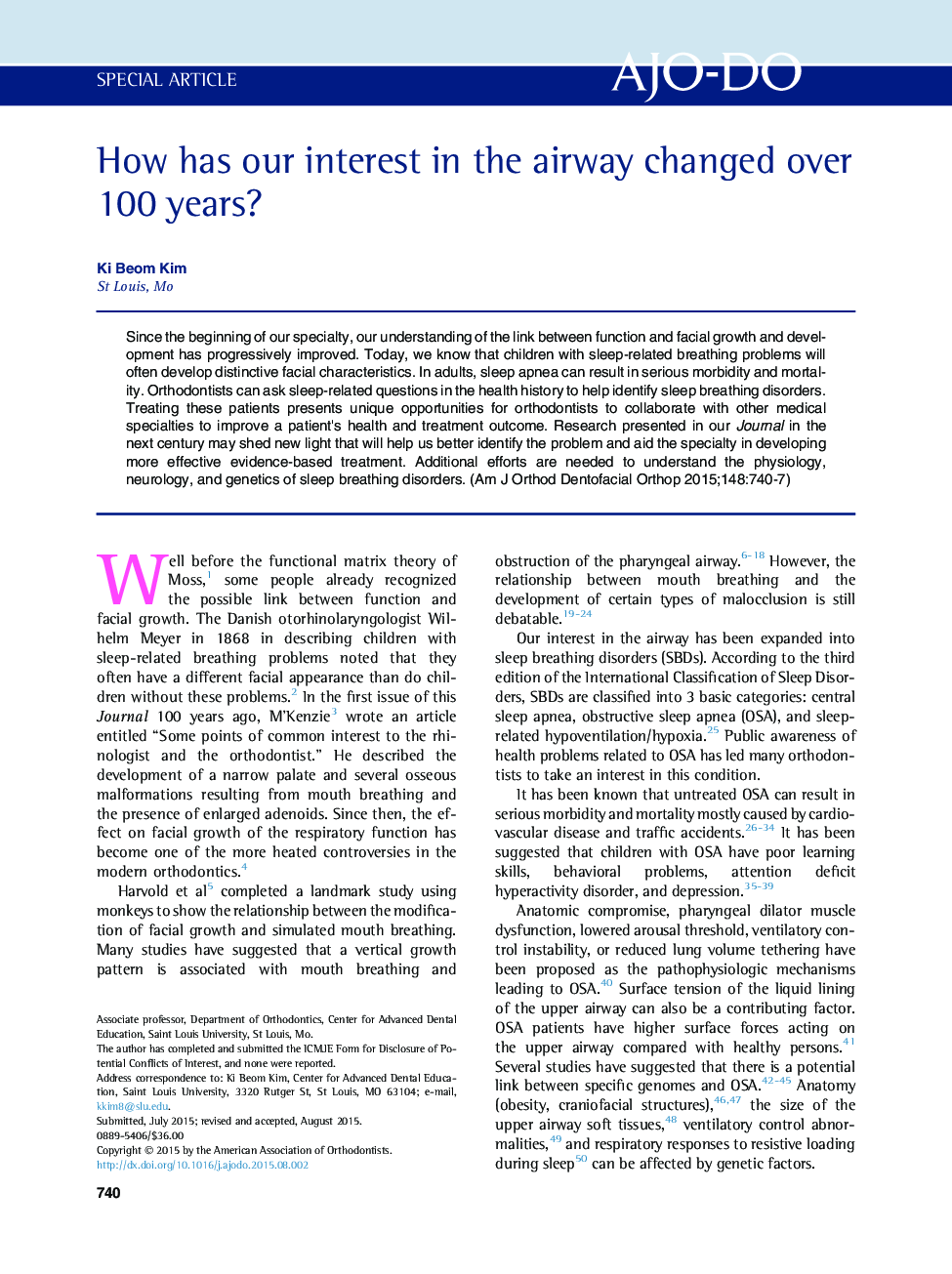| کد مقاله | کد نشریه | سال انتشار | مقاله انگلیسی | نسخه تمام متن |
|---|---|---|---|---|
| 3115792 | 1582682 | 2015 | 8 صفحه PDF | دانلود رایگان |

• Children with sleep-breathing disorders (SBDs) often develop distinctive facial features.
• In adults, sleep apnea can result in serious morbidity and mortality.
• Orthodontists can ask sleep-related questions in the health history.
• Additional efforts are needed to understand the physiology, neurology, and genetics of SBDs.
Since the beginning of our specialty, our understanding of the link between function and facial growth and development has progressively improved. Today, we know that children with sleep-related breathing problems will often develop distinctive facial characteristics. In adults, sleep apnea can result in serious morbidity and mortality. Orthodontists can ask sleep-related questions in the health history to help identify sleep breathing disorders. Treating these patients presents unique opportunities for orthodontists to collaborate with other medical specialties to improve a patient's health and treatment outcome. Research presented in our Journal in the next century may shed new light that will help us better identify the problem and aid the specialty in developing more effective evidence-based treatment. Additional efforts are needed to understand the physiology, neurology, and genetics of sleep breathing disorders.
Journal: American Journal of Orthodontics and Dentofacial Orthopedics - Volume 148, Issue 5, November 2015, Pages 740–747